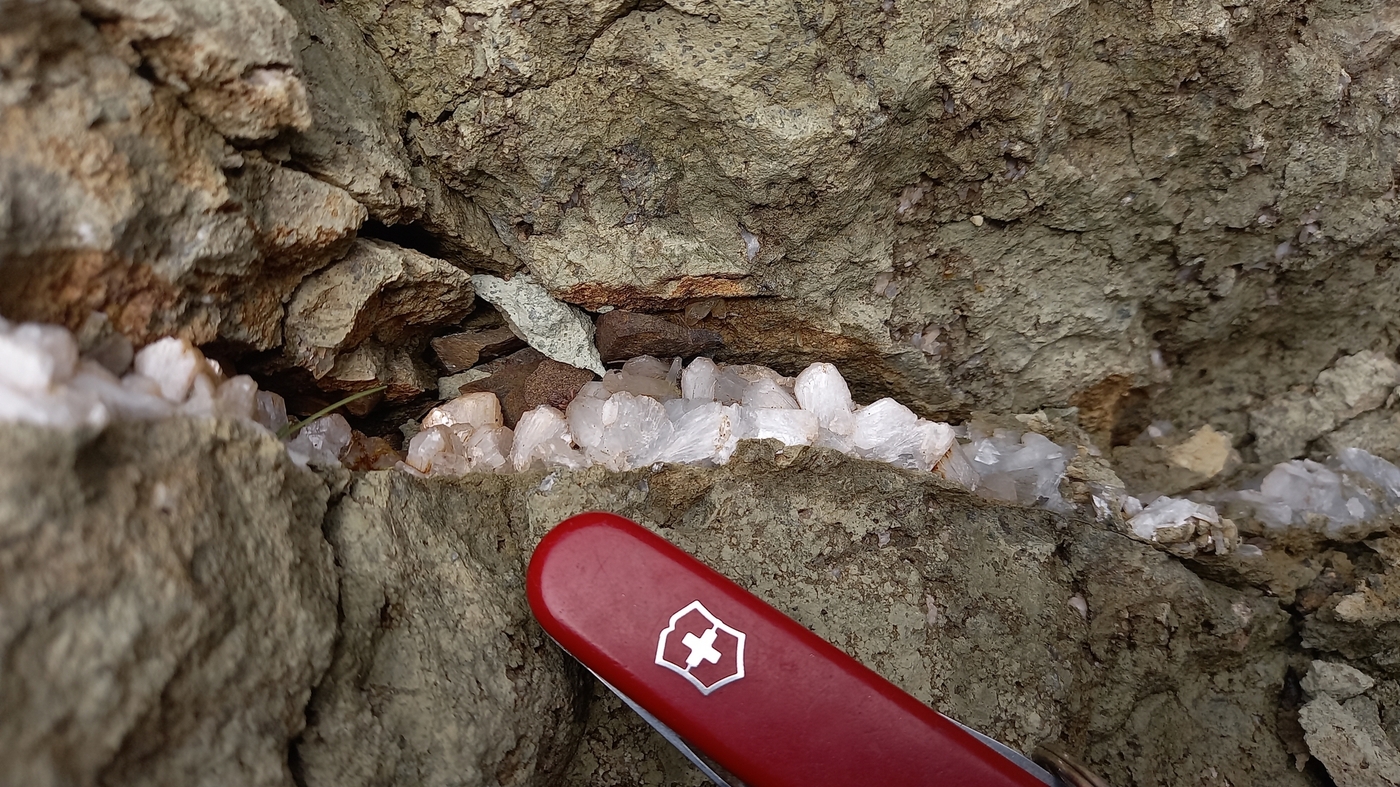Specimens of minerals known as zeolites, collected in Breiðdalur in the East Fjords, play a key role in a new discovery by a team of scientists in the US and Iceland. The researchers believe that these minerals could be used to quantify long-term temperature changes. Among the researchers is Tobias Björn Weisenberger, geoscientist and director of the new UI Research Centre in Breiðdalsvík. The findings have been published in Communications Earth and Environment, a new open access journal established by Nature Portfolio.
Tobias' colleagues on the project were a group of scientists at Northwestern University in the US: Claire J. Nelson, Andrew D. Jacobson and Gabriella Kitch. The study focused on zeolites, a kind of mineral formed when hot or warm water infiltrates bubbles or cracks in newly formed basalt. Zeolites are extremely striking and, along with Iceland spar, are some of the best known ornamental stones found in Iceland. One of the world's most famous locations for zeolites is Teigarhorn in Berufjörður, which is protected. The team collected specimens from various altitudes, from the river canyon to the tallest mountains in Berufjörður and Breiðdalur. The aim was to compare minerals that had formed at different depths of burial. Zeolites have multiple applications in industry, medicine and environmental remediation. They can be used to soak up contaminants, filter drinking water and even absorb carbon dioxide.
A mountain in Breiðdalur, East Iceland, where the zeolite specimens were collected. As the lava layers piled up, the load caused compression and transformation in the stack, so that belts of different zeolites formed at different depths. IMAGE/Tobias Björn Weisenberger

The research team used the latest technology to analyse calcium isotopes in the zeolites, the first study to explore this area. Isotopes are variations of the same element with different masses. The research revealed extreme variability of calcium isotopes within zeolites, more so than almost all other materials formed at the Earth's surface. The team also discovered that the composition of calcium isotopes in zeolites is strongly correlated with bond lengths between calcium and oxygen atoms. Zeolites with long bonds contained lighter calcium isotopes and those with short bonds contained heavier calcium isotopes.

Tobias Björn Weisenberger, specialist in zeolites and director of the new UI Research Centre in Breiðdalsvík, is among the authors of the paper.
The research team reports that these findings are extremely significant. They indicate that isotope fractionation could be temperature-dependent, meaning that zeolites could be used as a kind of geothermometer. In other words, they could enable scientists to reconstruct the temperature at the time they were formed, which in turn means it could be possible to chart long-term temperature changes in the environments where zeolites are formed.
The research team explained that the results also have significance for using calcium isotopes to trace weathering of basalt, the most common rock type on the planet, including its role in long-term climate regulation and application in carbon capture and storage. Carbon capture technology is already being used in Iceland and elsewhere to combat climate change.
The paper in Communications Earth and Environment is available on the journal website.
About the University of Iceland's Research Centre in Breiðdalsvík
The UI Research Centre in Breiðdalsvík was formally established this summer, built on the foundation of the Breiðdalssetur Research and Heritage Centre. The Research Centre is intended to be a forum for research, in particular geology and linguistics research. The Research Centre employs Dr Tobias Björn Weisenberger, director, and María Helga Guðmundsdóttir, project manager.
Learn more about the Research Centre





